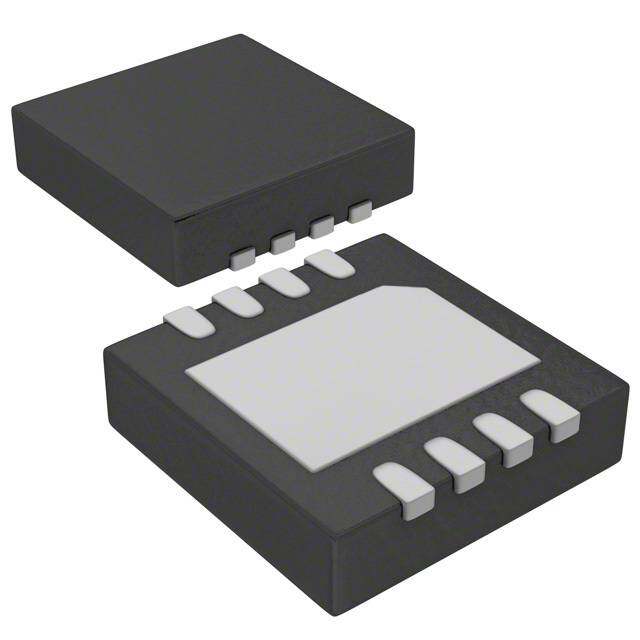ICGOO在线商城 > 集成电路(IC) > 数据采集 - 数模转换器 > AD766JNZ
- 型号: AD766JNZ
- 制造商: Analog
- 库位|库存: xxxx|xxxx
- 要求:
| 数量阶梯 | 香港交货 | 国内含税 |
| +xxxx | $xxxx | ¥xxxx |
查看当月历史价格
查看今年历史价格
AD766JNZ产品简介:
ICGOO电子元器件商城为您提供AD766JNZ由Analog设计生产,在icgoo商城现货销售,并且可以通过原厂、代理商等渠道进行代购。 AD766JNZ价格参考¥210.59-¥259.21。AnalogAD766JNZ封装/规格:数据采集 - 数模转换器, 16 位 数模转换器 1 16-PDIP。您可以下载AD766JNZ参考资料、Datasheet数据手册功能说明书,资料中有AD766JNZ 详细功能的应用电路图电压和使用方法及教程。
| 参数 | 数值 |
| 品牌 | Analog Devices |
| 产品目录 | 半导体 |
| 描述 | 数模转换器- DAC 16-Bit Current Steering w/ V-Ref |
| 产品分类 | 集成电路 - IC |
| 产品手册 | |
| 产品图片 |
|
| rohs | 符合RoHS |
| 产品系列 | 数据转换器IC,数模转换器- DAC,Analog Devices AD766JNZ |
| 产品型号 | AD766JNZ |
| 产品培训模块 | http://www.digikey.cn/PTM/IndividualPTM.page?site=cn&lang=zhs&ptm=19145http://www.digikey.cn/PTM/IndividualPTM.page?site=cn&lang=zhs&ptm=18614http://www.digikey.cn/PTM/IndividualPTM.page?site=cn&lang=zhs&ptm=26125http://www.digikey.cn/PTM/IndividualPTM.page?site=cn&lang=zhs&ptm=26140http://www.digikey.cn/PTM/IndividualPTM.page?site=cn&lang=zhs&ptm=26150http://www.digikey.cn/PTM/IndividualPTM.page?site=cn&lang=zhs&ptm=26147 |
| 产品目录页面 | |
| 产品种类 | 数模转换器- DAC |
| 位数 | 16 |
| 供应商器件封装 | 16-PDIP |
| 分辨率 | 16 bit |
| 包装 | 管件 |
| 商标 | Analog Devices |
| 安装类型 | 通孔 |
| 安装风格 | Through Hole |
| 封装 | Tube |
| 封装/外壳 | 16-DIP(0.300",7.62mm) |
| 封装/箱体 | PDIP-16 |
| 工作温度 | -40°C ~ 85°C |
| 工厂包装数量 | 25 |
| 建立时间 | 1.5µs |
| 接口类型 | Serial (3-Wire) |
| 数据接口 | 串行 |
| 最大功率耗散 | 150 mW |
| 最大工作温度 | + 70 C |
| 最小工作温度 | 0 C |
| 标准包装 | 25 |
| 电压参考 | Internal |
| 电压源 | 模拟和数字,双 ± |
| 电源电压-最大 | 13.2 V |
| 电源电压-最小 | 4.75 V |
| 稳定时间 | 1.5 us |
| 系列 | AD766 |
| 结构 | Current Steering |
| 转换器数 | 1 |
| 转换器数量 | 1 |
| 输出数和类型 | 2 电流,双极2 电压,双极 |
| 输出类型 | Current, Voltage |
| 采样比 | 390 kSPs |
| 采样率(每秒) | 390k |








- 商务部:美国ITC正式对集成电路等产品启动337调查
- 曝三星4nm工艺存在良率问题 高通将骁龙8 Gen1或转产台积电
- 太阳诱电将投资9.5亿元在常州建新厂生产MLCC 预计2023年完工
- 英特尔发布欧洲新工厂建设计划 深化IDM 2.0 战略
- 台积电先进制程称霸业界 有大客户加持明年业绩稳了
- 达到5530亿美元!SIA预计今年全球半导体销售额将创下新高
- 英特尔拟将自动驾驶子公司Mobileye上市 估值或超500亿美元
- 三星加码芯片和SET,合并消费电子和移动部门,撤换高东真等 CEO
- 三星电子宣布重大人事变动 还合并消费电子和移动部门
- 海关总署:前11个月进口集成电路产品价值2.52万亿元 增长14.8%

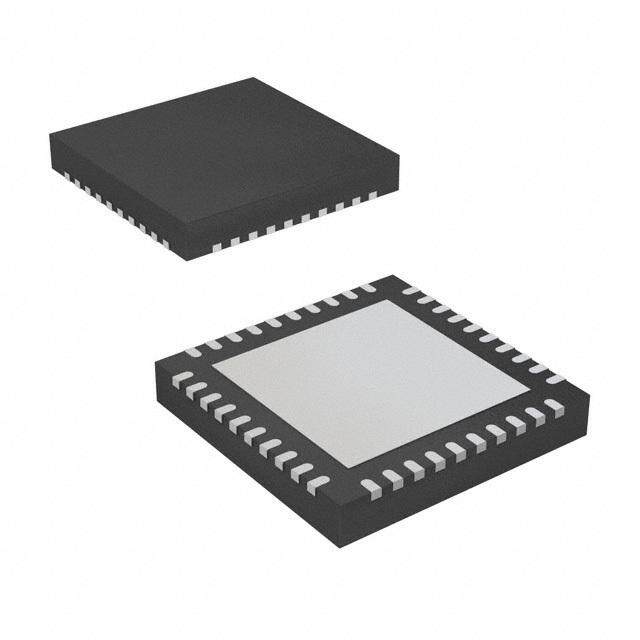



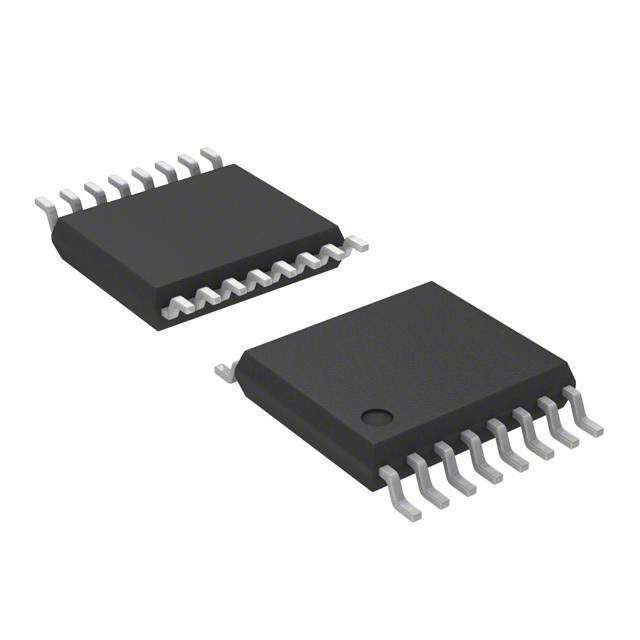
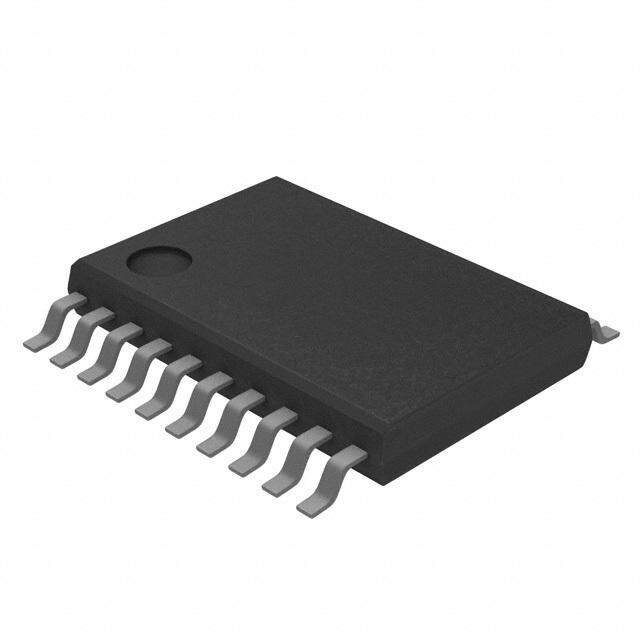
PDF Datasheet 数据手册内容提取
a 16-Bit DSP DACPORT AD766 FEATURES Zero-Chip Interface to Digital Signal Processors FUNCTIONAL BLOCK DIAGRAM Complete DACPORT® On-Chip Voltage Reference Voltage and Current Outputs Serial, Twos-Complement Input (cid:54)3 V Output Sample Rates to 390 kSPS 94 dB Minimum Signal-to-Noise Ratio –81 dB Maximum Total Harmonic Distortion 15-Bit Monotonicity (cid:54)5 V to (cid:54)12 V Operation 16-Pin Plastic and Ceramic Packages Available in Commercial, Industrial, and Military Temperature Ranges APPLICATIONS Digital Signal Processing Noise Cancellation Radar Jamming Automatic Test Equipment Precision Industrial Equipment The serial interface consists of bit clock, data, and latch enable Waveform Generation inputs. The twos-complement data word is clocked MSB first on falling clock edges into the serial-to-parallel converter, con- sistent with the serial protocols of popular DSP processors. The PRODUCT DESCRIPTION input clock can support data transfers up to 12.5 MHz. The The AD766 16-bit DSP DACPORT provides a direct, three- falling edge of latch enable updates the internal DAC input reg- wire interface to the serial ports of popular DSP processors, in- ister at the sample rate with the sixteen bits most recently cluding the ADSP-2101, TMS320CXX, and DSP56001. No clocked into the serial input register. additional “glue logic” is required. The AD766 is also com- The AD766 operates over a – 5 V to – 12 V power supply range. plete, offering on-chip serial-to-parallel input format conver- The digital supplies, +V and –V , can be separated from the sion, a 16-bit current-steering DAC, voltage reference, and a L L analog signal supplies, +V and –V , for reduced digital voltage output op amp. The AD766 is fabricated in Analog S S crosstalk. Separate analog and digital ground pins are also pro- Devices’ BiMOS II mixed-signal process which provides bipolar vided. An internal bandgap reference provides a precision volt- transistors, MOS transistors, and thin-film resistors for preci- age source to the output amp that is stable over temperature and sion analog circuits in addition to CMOS devices for logic. time. The design and layout of the AD766 have been optimized for ac Power dissipation is typically 120 mW with – 5 V supplies and performance and are responsible for its guaranteed and tested 300 mW with – 12 V. The AD766 is available in commercial 94 dB signal-to-noise ratio to 20 kHz and 79 dB SNR to (0(cid:176) C to +70(cid:176) C), industrial (–40(cid:176) C to +85(cid:176) C), and military 250 kHz. Laser-trimming the AD766’s silicon chromium thin- (–55(cid:176) C to +125(cid:176) C) grades. Commercial and industrial grade film resistors reduces total harmonic distortion below –81 dB parts are available in a 16-pin plastic DIP; military parts pro- (at 1 kHz), a specification also production tested. An optional cessed to MIL-STD-883B are packaged in a 16-pin ceramic linearity trim pin allows elimination of midscale differential DIP. See Analog Devices’ Military Products Databook or current linearity error for even lower THD with small signals. military data sheet for specifications for the military version. The AD766’s output amplifier provides a – 3 V signal with a high slew rate, small glitch, and fast settling. The output ampli- fier is short circuit protected and can withstand indefinite shorts to ground. DACPORT is a registered trademark of Analog Devices, Inc. REV.A Information furnished by Analog Devices is believed to be accurate and reliable. However, no responsibility is assumed by Analog Devices for its use, nor for any infringements of patents or other rights of third parties which may result from its use. No license is granted by implication or One Technology Way, P.O. Box 9106, Norwood, MA 02062-9106, U.S.A. otherwise under any patent or patent rights of Analog Devices. Tel: 617/329-4700 Fax: 617/326-8703
AD766–SPECIFICATIONS(T to T , (cid:54)5 V supplies, F = 500 kSPS unless otherwise noted. No deglitchers or MIN MAX S MSB trimming is used.) AD766J AD766A Parameter Min Typ Max Min Typ Max Units RESOLUTION 16 16 Bits DIGITAL INPUTS V 2.0 +V 2.0 +V V IH L L V 0.8 0.8 V IL I , V = V 1.0 1.0 m A IH IH L I , V = 0.4 –10 –10 m A IL IL SERIAL PORT TIMING Serial Clock Period (t ) 95 115 ns CLK Serial Clock HI (t ) 30 30 ns HI Serial Clock LO (t ) 30 70 ns LO Data Valid (t ) 40 40 ns DATA Data Setup (t ) 15 20 ns S Data Hold (t ) 15 20 ns H Clock-to-Latch-Enable (t ) 80 100 ns CTLE Latch-Enable-to-Clock (t ) 15 15 ns LETC Latch Enable HI (t ) 40 40 ns LEHI Latch Enable LO (t ) 40 80 ns LELO ACCURACY1 Gain Error – 2.0 – 2.0 % of FSR Gain Drift – 25 – 25 ppm of FSR/(cid:176) C Midscale Output Voltage Error – 30 – 30 mV Bipolar Zero Drift – 4 – 4 ppm of FSR/(cid:176) C Differential Linearity Error – 0.001 – 0.001 % of FSR Monotonicity 15 15 Bits TOTAL HARMONIC DISTORTION F = 1037 Hz1 OU T 0 dB –88 –81 –88 –81 dB –20 dB –75 –65 –75 –65 dB –60 dB –37 –27 –37 –27 dB F = 49.07 kHz2 OUT 0 dB –77 –72 –77 –72 dB –20 dB –69 –66 –69 –66 dB –60 dB –25 –21 –25 –21 dB SIGNAL-TO-NOISE RATIO3 20 Hz to 20 kHz (F = 1037 Hz)1 94 102 94 102 dB OUT 20 kHz to 250 kHz (F = 49.07 kHz)2 79 83 79 83 dB OUT SETTLING TIME (to – 0.0015% of FSR) Voltage Output1 6 V Step 1.5 1.5 m s 1 LSB Step 1.0 1.0 m s Slew Rate 9 9 V/m s Current Output 1 mA Step 10 W to 100 W Load 350 350 ns 1 kW Load 350 350 ns OUTPUT Voltage Output Configuration1 Bipolar Range – 2.88 – 3.0 – 3.12 – 2.88 – 3.0 – 3.12 V Output Current – 8.0 – 8.0 mA Output Impedance 0.1 0.1 W Short Circuit Duration Indefinite to Common Indefinite to Common Current Output Configuration Bipolar Range – 0.7 – 1.0 – 1.3 – 0.7 – 1.0 – 1.3 mA Output Impedance (– 30%) 1.7 1.7 kW POWER SUPPLY Voltage: +V and +V 4.75 13.2 4.75 13.2 V L S Voltage: –V and –V –13.2 –4.75 –13.2 –4.75 V L S Current Case 11: V and V = +5 V +I 12.0 15.0 12.0 15.0 mA S L Current Case 11: –V and –V = –5 V –I –12.0 –15.0 –12.0 –15.0 mA S L Current Case 2:1 V and V = +12 V +I 10.5 10.5 mA S L Current Case 2:1 –V and –V = –12 V –I –14 –14 mA S L Current Case 34: V and V = +5 V +I 12 12 mA S L Current Case 2:1 –V and –V = –12 V –I –14 –14 mA S L Power Dissipation: V and V = – 5 V1 120 150 120 150 mW S L Power Dissipation: V and V = – 12 V 300 300 mW S L Power Dissipation: V and V = +5 V, S L Power Dissipation: –V and –V = –12 V4 225 225 mW S L –2– REV. A
AD766 AD766J AD766A Parameter Min Typ Max Min Typ Max Units TEMPERATURE RANGE Specified 0 +70 –40 +85 (cid:176) C Storage –60 +100 –60 +100 (cid:176) C NOTES 1For A grade only, voltage outputs are guaranteed only if +V ‡ 7 V and –V £ –7 V. S S 2Specified using external op amp, see Figure 3 for more details. 3Tested at full-scale input. 4For A grade only, power supplies must be symmetric, i.e., V = |–V| and +V = |–V |. Each supply must independently meet this equality within – 5%. S S L L All min and max specifications are guaranteed. Specifications in boldface are tested on all production units at final electrical test. Results from those tests are used to calculate outgoing quality levels. Specifications subject to change without notice. ABSOLUTE MAXIMUM RATINGS* V to DGND . . . . . . . . . . . . . . . . . . . . . . . . . . . . . .0 to 13.2 V ORDERING GUIDE L V to AGND . . . . . . . . . . . . . . . . . . . . . . . . . . . . . .0 to 13.2 V S Temperature Package –V to DGND . . . . . . . . . . . . . . . . . . . . . . . . . .–13.2 V to 0 V L Model Range Option* –V to AGND . . . . . . . . . . . . . . . . . . . . . . . . . .–13.2 V to 0 V S Digital Inputs to DGND . . . . . . . . . . . . . . . . . . . .–0.3 V to VL AD766JN 0(cid:176) C to +70(cid:176) C N-16 AGND to DGND . . . . . . . . . . . . . . . . . . . . . . . . . . . . .– 0.3 V AD766AN –40(cid:176) C to +85(cid:176) C N-16 Short Circuit Protection . . . . . . . . Indefinite Short to Ground AD766SD/883B –55(cid:176) C to +125(cid:176) C D-16 Soldering . . . . . . . . . . . . . . . . . . . . . . . . . . . . . +300(cid:176) C, 10 sec *N = Plastic DIP; D = Ceramic DIP. *Stresses greater than those listed under “Absolute Maximum Ratings” may cause permanent damage to the device. This is a stress rating only and functional CONNECTION DIAGRAM operation of the device at these or any other conditions above those indicated in the operational section of this specification is not implied. Exposure to absolute maximum rating conditions for extended periods may affect device reliability. PIN DESIGNATIONS Pin Function Description 1 –V Analog Negative Power Supply S 2 DGND Digital Ground 3 V Logic Positive Power Supply L 4 NC No Connection 5 CLK Clock Input 6 LE Latch Enable Input 7 DATA Serial Data Input 8 –V Logic Negative Power Supply L 9 V Voltage Output OUT 10 R Feedback Resistor F 11 SJ Summing Junction 12 AGND Analog Ground 13 I Current Output OUT 14 MSB ADJ MSB Adjustment Terminal 15 TRIM MSB Trimming Potentiometer Terminal 16 V Analog Positive Power Supply S ESD SENSITIVITY The AD766 features input protection circuitry consisting of large “distributed” diodes and polysilicon series resistors to dissipate both high energy discharges (Human Body Model) and fast, low energy pulses (Charged Device Model). Per Method 3015.2 of MIL-STD-883C, the WARNING! AD766 has been classified as a Category 1 Device. Proper ESD precautions are strongly recommended to avoid functional damage or perfor- ESD SENSITIVE DEVICE mance degradation. Charges as high as 4000 volts readily accumulate on the human body and test equipment, and discharge without detection. Unused devices must be stored in conduc- tive foam or shunts, and the foam discharged to the destination socket before devices are removed. For further information on ESD precaution, refer to Analog Devices’ ESD Prevention Manual. REV. A –3–
AD766–Definition of Specifications TOTAL HARMONIC DISTORTION FUNCTIONAL DESCRIPTION Total Harmonic Distortion (THD) is defined as the ratio of the Serial input data is clocked into the AD766’s shift register by square root of the sum of the squares of the values of the har- the falling edge of CLK. Data is presumed to be in twos monics to the value of the fundamental input frequency. It is ex- complement format with MSB (i.e., the sign bit) clocked in first. pressed in percent (%) or decibels (dB). The shift register converts the most recently clocked-in 16 bits to a parallel word. The falling edge of the latch enable (LE) sig- THD is a measure of the magnitude and distribution of integral nal causes the most recent parallel word to be transferred to the linearity error and differential linearity error. The distribution of internal DAC input latch. See Figure 2 for detailed serial port these errors may be different, depending on the amplitude of the timing requirements. output signal. Therefore, to be most useful, THD should be specified for both large and small signal amplitudes. The contents of the DAC input latch cause the 16-bit DAC to generate a corresponding current. This – 1 mA current is avail- SETTLING TIME able directly on the I pin. OUT Settling Time is the time required for the output to reach and To use the internal op amp, connect I (Pin 13) directly to remain within a specified error band about its final value, mea- OUT the summing junction pin, SJ (Pin 11) and connect the feedback sured from the digital input transition. It is the primary measure resistor pin, R (Pin 10) to V (Pin 9). Note that the internal of dynamic performance. F OUT op amp is in the inverting configuration. Using the internal 3 kW feedback resistor, this op amp will produce – 3 V outputs. BIPOLAR ZERO ERROR One advantage of external pins at each end of the feedback Bipolar Zero Error or midscale error is the deviation of the ac- resistor is that it allows the user to implement a single pole tual analog output from the ideal output (0 V) when the 2s active low-pass filter simply by adding a capacitor across these complement input code representing half scale (all 0s) is loaded pins (Pins 10 and 13). The circuit can best be understood in the input register. redrawn as shown in Figure 1. DIFFERENTIAL LINEARITY ERROR Differential Linearity Error is the measure of the variation in analog value, normalized to full scale, associated with a 1 LSB change in the digital input. Monotonic behavior requires that the differential linearity error not exceed 1 LSB in the negative direction. MONOTONICITY A D/A converter is monotonic if the output either increases or remains constant as the digital input increases. Figure 1. Low-Pass Filter Using External Capacitor SIGNAL-TO-NOISE RATIO The frequency response from this filter will be SNR is defined as the ratio of the fundamental to the square (cid:86) (cid:40)(cid:115)(cid:41) - (cid:82) root of the sum of the squares for the values of all the nonfun- (cid:79)(cid:85)(cid:84) = (cid:70) damental, nonharmonic signals for a specified bandwidth. SNR (cid:73)(cid:79)(cid:85)(cid:84) (cid:82)(cid:70)•(cid:67)•(cid:115)+(cid:49) is tested at full-scale input. The AD766 specifies SNR for where R is 3 kW (– 20%). F 20 kHz and 250 kHz bandwidths. Figure 2. AD766 Serial Input Timing REV. A –4–
Analog Circuit Considerations–AD766 For applications requiring broader bandwidths and/or even The digital ground pin returns ground current from the digital lower noise than that afforded by the AD766’s internal op amp, logic portions of the AD766 circuitry. This pin should be con- an external op amp can easily by used in its place. I (Pin 13) nected to the digital common point in the system. OUT drives the negative (inverting) input terminal of the external op As illustrated in Figure 5, the analog and digital grounds should amp, and its external voltage output is connected to the feed- be connected together at one point in the system. back resistor pin, R (Pin 10). To insure that the AD766’s un- F used internal op amp remains in a closed-loop configuration, V (Pin 9) should be tied to the summing junction pin, SJ OUT (Pin 11). As an example, Figure 3 shows the AD766 using the AD744 op amp as an external current-to-voltage converter. In this invert- ing configuration, the AD744 will provide the same – 3 V out- put as the internal op amp would have. Other recommended amplifiers include the AD845 and AD846. Note that a single pole of low-pass filtering could also be attained with this circuit simply by adding a capacitor in parallel with the feedback resis- tor as just shown in Figure 1. Figure 5. Recommended Circuit Schematic POWER SUPPLIES AND DECOUPLING The AD766 has four power supply input pins. – V provide the S supply voltages to operate the linear portions of the DAC in- cluding the voltage reference, output amplifier and control am- plifier. The – V supplies are designed to operate from – 5 V to S – 12 V. The – V supplies operate the digital portions of the chip, in- L cluding the input shift register and the input latching circuitry. The – V supplies are also designed to operate from – 5 V to L – 12 V. To assure freedom from latch-up, –V should never go L Figure 3. External Op Amp Connections more negative than –V . S Special restrictions on power supplies apply to extended tem- Residual DAC differential linearity error around midscale can perature range versions of the AD766 that do not apply to the be externally trimmed out, improving THD beyond the commercial AD766J. First, supplies must be symmetric. That is, AD766’s guaranteed tested specifications. This error is most +V = (cid:117)–V (cid:117) and +V = (cid:117)–V (cid:117). Each supply must independently S S L L significant with low-amplitude signals because the ratio of the meet this equality within – 5%. Since we require that –V £ –V S L midscale linearity error to the signal amplitude is greatest in this to guarantee latch-up immunity, this symmetry principle implies case, thereby increasing THD. The MSB adjust circuitry shown that the positive analog supply must be greater than or equal to in Figure 4 can be used for improving THD with low-level sig- the positive digital supply, i.e., V ‡ –V for extended-temper- S L nals. Otherwise, the AD766 will operate to its specifications ature range parts. In other words, the digital supply range must with MSB ADJ (Pin 14) and TRIM (Pin 15) unconnected. be inside the analog supply range. Second, the internal op amp’s performance in generating voltage outputs is only guaranteed if +V ‡ 7 V (and –V £ –7 V, by the symmetry principle). These S S constraints do not apply to the AD766J. Decoupling capacitors should be used on all power supply pins. Furthermore, good engineering practice suggests that these ca- Figure 4. Optional MSB Adjustment Circuit pacitors be placed as close as possible to the package pins as well as the common points. The logic supplies, – V , should be L ANALOG CIRCUIT CONSIDERATIONS decoupled to digital common; and the analog supplies, – V , S GROUNDING RECOMMENDATIONS should be decoupled to analog common. The AD766 has two ground pins, designated AGND (analog The use of four separate power supplies will reduce feedthrough ground) and DGND (digital ground). The analog ground pin is from the digital portion of the system to the linear portions of the “high-quality” ground reference point for the device. The the system, thus contributing to the performance as tested. analog ground pin should be connected to the analog common However, four separate voltage supplies are not necessary for point in the system. The output load should also be connected good circuit performance. For example, Figure 6 illustrates a to that same point. REV. A –5–
AD766 system where only a single positive and a single negative supply in signal processing applications, the DAC is tested at two are available. In this case, the positive logic and positive analog output frequencies and at three signal levels over the full oper- supplies may both be connected to the single positive supply. ating temperature ranges. The negative logic and negative analog supplies may both be A block diagram of the test setup is shown in Figure 8. In this connected to the single negative supply. Performance would test setup, a digital data stream, representing a 0 dB, –20 dB or benefit from a measure of isolation between the supplies intro- –60 dB sine wave is sent to the device under test. The frequen- duced by using simple low-pass filters in the individual power cies used are 1037 Hz and 49.07 kHz. Input data is latched into supply leads. the AD766 at 500 kSPS. The AD766 under test produces an analog output signal using the on-board op amp for 1 kHz and an external op amp for 50 kHz. The automatic test equipment digitizes the output test wave- form, and then an FFT to 250 kHz is performed on the results of the test. Based on the first 9 harmonics of the fundamental 1037 Hz and the first 3 harmonics of the 49.07 kHz output waves, the total harmonic distortion of the device is calculated. Neither a deglitcher nor an MSB trim is used during the THD test. The circuit design, layout and manufacturing techniques em- ployed in the production of the AD766 result in excellent THD performance. Figure 9 shows the typical unadjusted THD per- Figure 6. Alternate Recommended Schematic formance of the AD766 for various amplitudes of 1 kHz and 50 kHz sine waves. As can be seen, the AD766 offers excellent performance even at amplitudes as low as 60 dB. Figure 10 illustrates the typical THD versus frequency performance from the internal amplifier for a filtered AD766 output. At frequen- cies greater than approximately 30 kHz, depending on the low- pass filter used, an improvement in THD of 3–4 dB over the performance shown in the figure can be achieved. Figure 11 illustrates the consistent THD performance of the AD766 over temperature. Figure 7. Power Dissipation vs. Clock Frequency As with most linear circuits, changes in the power supplies will affect the output of the DAC. Analog Devices recommends that well regulated power supplies with less than 1% ripple be incor- porated into the design of any system using these device. MEASUREMENT OF TOTAL HARMONIC DISTORTION The THD specification of a DSP DAC represents the amount of undesirable signal produced during reconstruction of a digital waveform. To account for the variety of operating conditions Figure 9. Typical Unadjusted THD Figure 8. Distortion Test Circuit –6– REV. A
Applications–AD766 AD766 TO TMS320C25 Figure 13 shows the zero-chip interface to the TMS320C25. The interface to other TMS320C2X processors is similar. Note that the C25 should be run in continuous mode. The C25’s frame synch signal (FSX) will be asserted at the beginning of each 16-bit word but will actually latch in the previous word. Figure 10. Typical THD vs. Frequency Figure 12. AD766 to ADSP-2101/ADSP-2102/ ADSP-2105/ ADSP-2111 Figure 13. AD766 to TMS320C25 The CLKS, FSX and DX outputs of the TMS320C25 are con- nected to the CLK, LE and DATA inputs of the AD766, re- spectively. Data (DX) is valid on the falling edge of CLKX. The Figure 11. THD vs. Temperature maximum serial clock rate of the TMS320C25 is 5 MHz. INTERFACING THE AD766 TO DIGITAL SIGNAL AD766 TO DSP56000/56001 PROCESSORS Figure 14 shows the zero-chip interface to the DSP56000/ The AD766 is specifically designed to easily interface to several 56001. The SSI of the 56000/56001 allows serial clock rates up popular digital signal processors (DSP) without any additional to fosc/4. SCK, SC2 and STD can be directly connected to the logic. Such an interface reduces the possibility of interface prob- CLK, LE and DATA inputs of the AD766. The CRA control lems and improves system reliability by minimizing component register of the 56000 allows SCK to be internally generated and count. software configurable to various divisions of the master clock frequency. The data (STD) is valid on the falling edge of SCK. AD766 TO ADSP-2101 The ADSP-2101 incorporates two complete serial ports which can be directly interfaced to the AD766 as shown in Figure 12. The SCLK, TFS and DT outputs of the ADSP-2101 are con- nected directly to the CLK, LE and DATA inputs of the AD766, respectively. SCLK is internally generated and can be programmed to operate from 94 Hz to 6.25 MHz. Data (DT) is valid on the falling edge of SCLK. After 16 bits have been trans- mitted, the falling edge of TFS updates the AD766’s data latch. Using both serial ports of the ADSP-2101, two AD766’s can be Figure 14. AD766 to DSP56000/DSP56001 directly interfaced with no additional hardware. REV. A –7–
AD766 OUTLINE DIMENSIONS Dimensions shown in inches and (mm). 16-Pin Plastic DIP (N-16) 1 9 3/ – 6 1 – a 5 8 3 1 C D-16 16-Lead Side Brazed Ceramic DIP A. S. U. N D I E T N RI P –8– REV. A
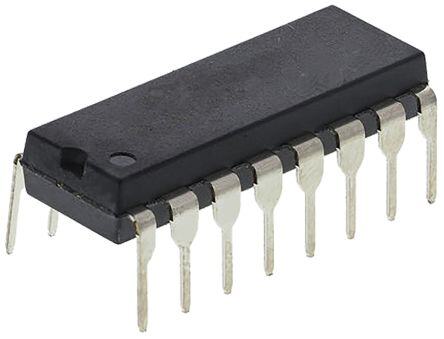
 Datasheet下载
Datasheet下载



